Switching Gear

Dear Bubbles:
You were a full-frame Canon shooter, and you’ve moved to Olympus (OMD EM1 Mark II, I believe?). What do you like about your Olympus micro-four-thirds gear for landscape photography, and what do you feel you’ve given up leaving the Canon full-frame system, if anything?
~Dave
Dear Dave,
You’re correct. I was happy with my Canon 5D Mark II system and had no intentions of making the switch to mirrorless but did so in 2016. In fact, when mirrorless cameras first came into the mainstream view, I didn’t understand the hype. What was the big deal about removing the mirror? I had never really paid attention to its function in my earlier cameras. Why would I start?
(In case you had not paid attention to this hidden object either, some background: with single-lens reflex cameras, light enters the lens, hits a mirror at a 45-angle, and bounces around a pentaprism to display the scene through the optical viewfinder. When you press the shutter, the mirror flips up to expose the sensor or film. That “click-click” you hear? That’s the mirror flipping up and down during the exposure—that’s why you can’t see anything through the viewfinder temporarily when you use an optical viewfinder. Mirrorless cameras do not use a mirror or a prism. Light comes through the lens and records directly onto a digital sensor. The resulting image is then displayed on the electronic viewfinder and/or the LCD screen on the back of the camera as if you were looking at a photograph on a small computer screen.)
I learned through some early research that the big deal, at least for me, had less to do with removal of the mirror and more with the added functionality manufacturers delivered through the then-new technology. These improvements came with significant size, weight, and cost benefits as well. I still wasn’t convinced, though, that a mirrorless camera could serve my landscape photography work well. River trips changed my mind…
While on my paddle adventure across Lake Powell in November 2015, I didn’t make many images of our journey (certainly not as many as I would have liked) because my digital single-lens reflex (DSLR) camera, my Canon 5D Mark II, always seemed to be buried at the bottom of my dry bag and out of reach. I decided after that trip that I wanted a smaller camera, one that could fit in my coat pocket but could still make professional-level (i.e. publishable) images.
I started digging into the offerings at the time: Olympus, Panasonic, Sony, and Fuji. (Nikon and Canon had not yet entered this market.) A few friends let me borrow their mirrorless cameras. Workshop clients allowed me to play with their different models. I quickly narrowed my choice down to Panasonic and Olympus.
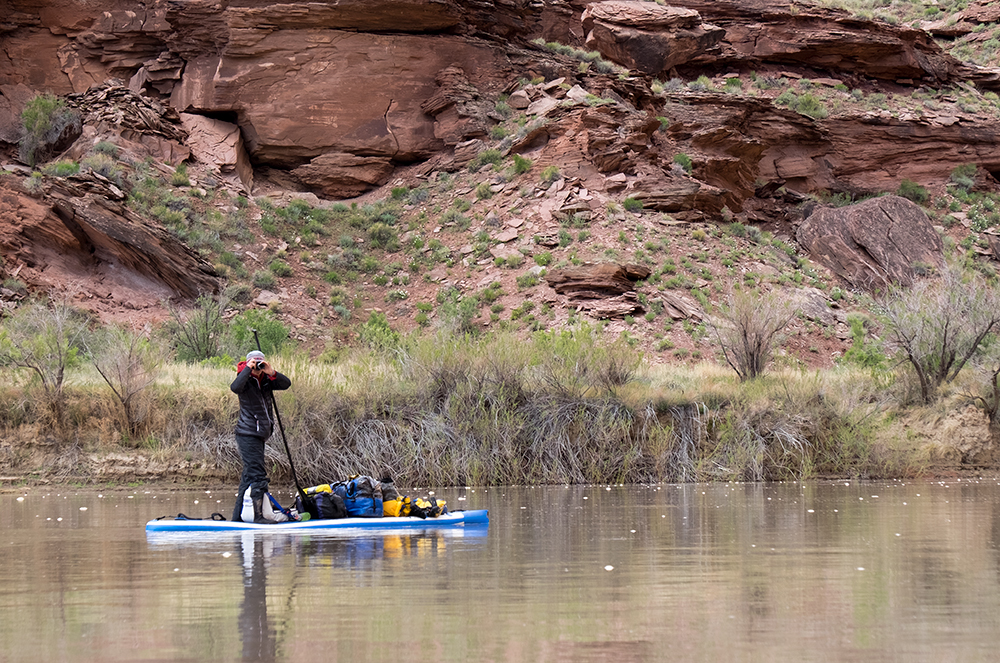
Why? I was able to fumble my way through the menu systems in both of these brands without reading the instruction manual and could make an image instantly. My little monkey brain could not understand Sony’s setup (which was also heavier and pricier than Panasonic and Olympus). I’m pretty sure the two marbles in my head exploded when I tested Fuji. I just don’t think the same way their designers do. In a roll of the dice, I bought a Panasonic Lumix GX8, a mirrorless micro-four-thirds camera. (Micro-four-thirds refers to the sensor size. I’ll get back to that in a minute.)
Next, I searched for the broadest zoom lens I could find. I didn’t want to change lenses while balancing on a paddleboard. Balancing is hard enough. Panasonic and Olympus share the same lens mount, so I had many options from which to choose. I settled on an Olympus 14-150mm (which is equivalent to a 28-300mm in 35mm terms due to the camera’s 2x crop factor). I also splurged on a 7-14mm and the 60mm macro lens. The whole kit, even after throwing in multiple batteries and chargers, a cable release, new SD cards, and other accessories, cost me less than a new Canon 5D Mark III DSLR camera body (which, at the time cost around $3,000-$3,500).
In April 2016, my friend Guy Tal and I decided to paddle the Green River through Labyrinth Canyon near Moab, UT. On river trips, I tend to pack more than I would if I were schlepping a backpack in the wild, but less than I would for car camping. Weight (and space) matter on my stand-up paddleboard (SUP) otherwise I tip over or sink. I compared my two options for camera gear:

(The weight of the 14-150mm is not a typo. I really own a 28-300mm lens that weighs less than a pound. And it fits in the palm of my hand…)
Now 5.2 lbs may not sound like a lot (it’s about the weight of a two-liter soda bottle), but when I factored in the accessories I’d have to bring along, I couldn’t afford the extra weight. I decided our four-day outing on the Green River would serve as the perfect opportunity to test the mirrorless capabilities in the field. I tucked the GX8 in my coat pocket. I left my Canon system at home.
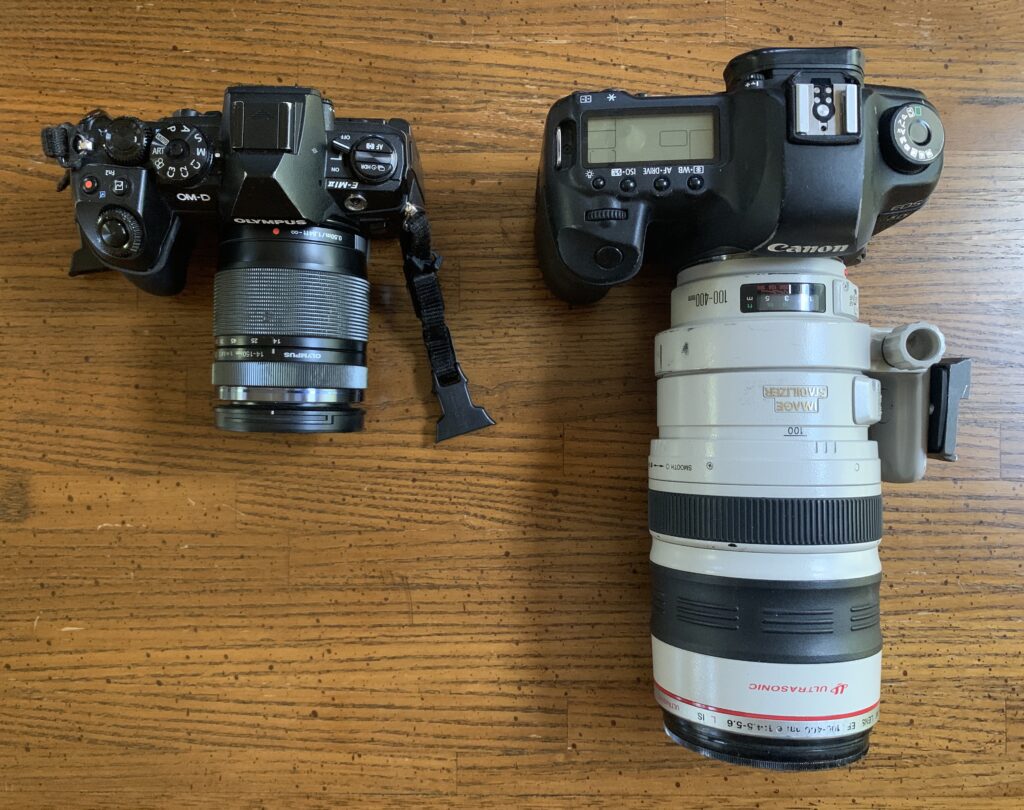
Within hours of launching on the Green River, it was clear mirrorless was the perfect solution for me. I could shoot everything from wide-angle to telephoto scenes from my SUP—without changing lens, while floating on the water. I could hike farther—and not sacrifice a favorite lens (or lenses) to do so. After four days, I couldn’t come up with a single reason why I couldn’t use my Panasonic for all my adventures, not just ones involving paddleboards and weight restrictions. My Canon gear has not seen the light of day since.
In the fall of 2016, I spoke at the Out of Acadia photography conference. During the Q&A section of my presentation, an attendee asked me what cameras I used. I answered “The Panasonic GX8 with Olympus lenses.” Representatives from both Panasonic and Olympus were in the audience. Afterward, Panasonic offered me lenses to test, Olympus a camera. After a couple months of evaluation, I purchased the Olympus OMD EM1 Mark II (which added 0.2 lbs to my weight). I stayed with my Olympus lenses—and picked up the fixed 300mm.
The GX8 was and is a fine camera. OMD EM1 Mark II just offered many more bells and whistles—a lot of functions I wasn’t sure I’d use but have. I immediately noticed the expanded dynamic range. I tapped into focus peaking–my camera sparkles yellow at me when I manually focus! I experimented with the high dynamic range (HDR) presets, focus stacking, multiple exposures, high-resolution shot (which gives me an 80-megapixel file), and the intervolumeter. I loved the convenience of the side-hinged articulating screen—no more contorting and bending to look through the viewfinder when positioned low to the ground. I appreciated the backup capabilities of the dual memory card slots. The built-in five-axis image stabilization allowed me to hand-hold my camera at ridiculously slow shutter speeds (my current record is four seconds from my knees in civil twilight…tack sharp…). There are still many features I have yet to explore like Live Composite. That’s next on the “to learn” list.
Do I need all of these functions? Of course not. I photographed for many years with a large-format 4×5 camera. I need a lens, light, and something to record it on to make a photograph. Do I love and appreciate all of these functions? Absolutely! I feel very spoiled by my mirrorless camera.
Over time, I have found the Olympus has handled challenging weather better than my Canon did. It’s endured rain and splashes on other Western rivers without added rain-gear or protection. It’s managed fog and ocean spray along the Oregon Coast without a hiccup. It’s held up in frosty -26F conditions in Acadia. It’s a workhorse.
The only downside with the mirrorless–other than it doesn’t make my coffee in the morning for me, a function I’m certain the manufacturers are working on–is the shortened battery life. Because of the power consumption of the electronic viewfinder, I tend to go through a battery a day or more in photographically-rich places like the Colorado River through the Grand Canyon, more if I do long-exposure astrophotography. I could squeeze a day and a half, maybe two, out of Canon batteries. At a mere weight of 0.16 lbs. each, though, what’s an extra battery or two in the bag? (I carry seven on the Colorado River through the Grand Canyon where charging facilities are limited.) That’s a sacrifice I’m willing to suffer through, if you can even call it suffering.
Canon, Panasonic, and Olympus offered similar image resolution. The 5D Mark II equals 21.1 megapixels to the GX8’s 20.3 and EM1 Mark II’s 20.4. Even so, I originally harbored concerns that the mirroless’s micro-four-thirds sensor size would render significantly poorer image quality than Canon’s full-frame sensor, especially when printed. The micro-four-thirds sensor, after all, is not even half the size of the full-frame sensor:

My worries dissipated the first time I printed a four-foot by five-foot photograph from my GX8. There was no visible grain or pixelation. I couldn’t see a dot. I’ve also had numerous images published in national magazines and in books over the years.
There are plenty of people on the internet who seemingly enjoy bantering about sensor sizes, megapixels, and in general, how “my camera is better than your camera.” Does size really matter? For those who say they need more megapixels because they print large, photographer Lee Morris calculated in his F-Stoppers article that you need precisely 0.006 mexapixels for photograph on a billboard to look good (from a reasonable viewing distance of 650 feet). National-level magazines have suggested they need no more than 8 megapixels to print a two-page spread at full bleed. The newest iPhones have more megapixels than that. And let’s be honest, much of the digital photography work produced today sits on hard drives and mobile devices.
When I hear arguing over sensor size and megapixels, it reminds me of when I worked at Intel. Computer chip manufacturers used to battle over the megahertz speed, which turned into a gigahertz war, before these companies realized most people–other than gamers and graphic designers–were using their computers to surf the internet and create text documents (e.g. with Microsoft Word). In other words, customers didn’t need more speed after a certain threshold. They wanted more functionality. That’s where I’d position the mirrorless camera companies now. We already have enough megapixels for most of the work being reproduced today. Sensor technology continues to improve. I want useful functions, like a camera that rubs my feet after a shoot! (Olympus, are you listening?)
Besides, to each their own, but I have better things to do with my time than argue with strangers on the web and judging other people’s individual decisions about photography gear. You know, like paddling rivers, wandering and discovering, and making photographs. I won’t claim that a smaller sensor is better or even equal to a full-frame sensor in terms of image quality. I will claim, though, that my mirrorless system gives me enough quality to meet my needs given how I use my gear, my interests as a photographer (i.e., wanderer), and the specifications from my publication outlets. Photographers should spend the time to find a camera solution that fits their needs and carry on. What works for me may not work for you, and that’s OK.
In the end, I’ve never regretted my decision to make the switch from a full-frame DSLR to mirrorless micro-four-thirds system. I love the size, weight, convenience, ease of use, functionality, durability, and quality. I love the freedom it’s given me to see and do more. I’ve gained much and lost nothing. If anything, I wonder why it took me so long to make the change. Now that I have, though, my back, knees, and checkbook thank me.
Be well, be wild,
Bubbles
Have a question about photography, art, and/or the creative life? Need some advice? Send your question to Dear Bubbles at [email protected] to be possibly featured in a future column post. (If you’d prefer a different display name than your real first name, please include your preferred nickname in your note.)


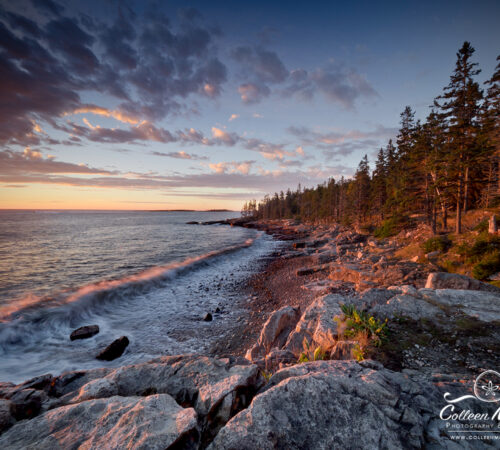
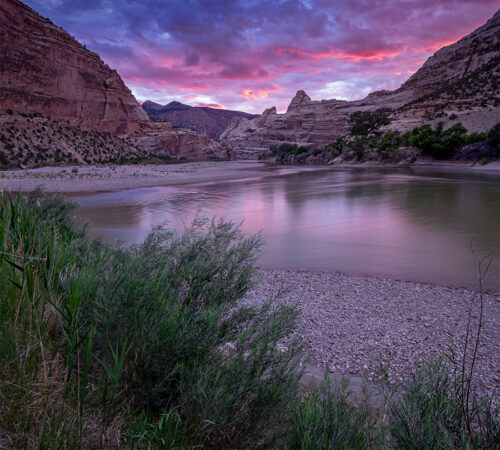
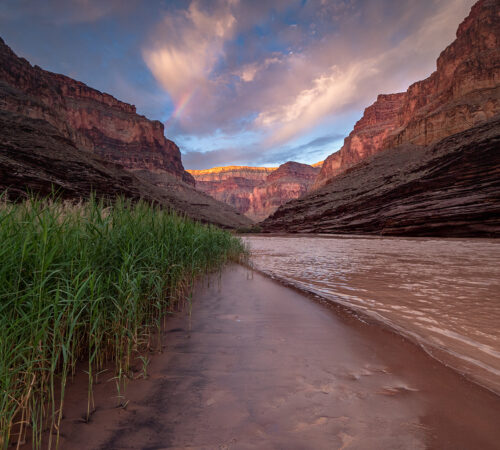
One Comment
Pingback: